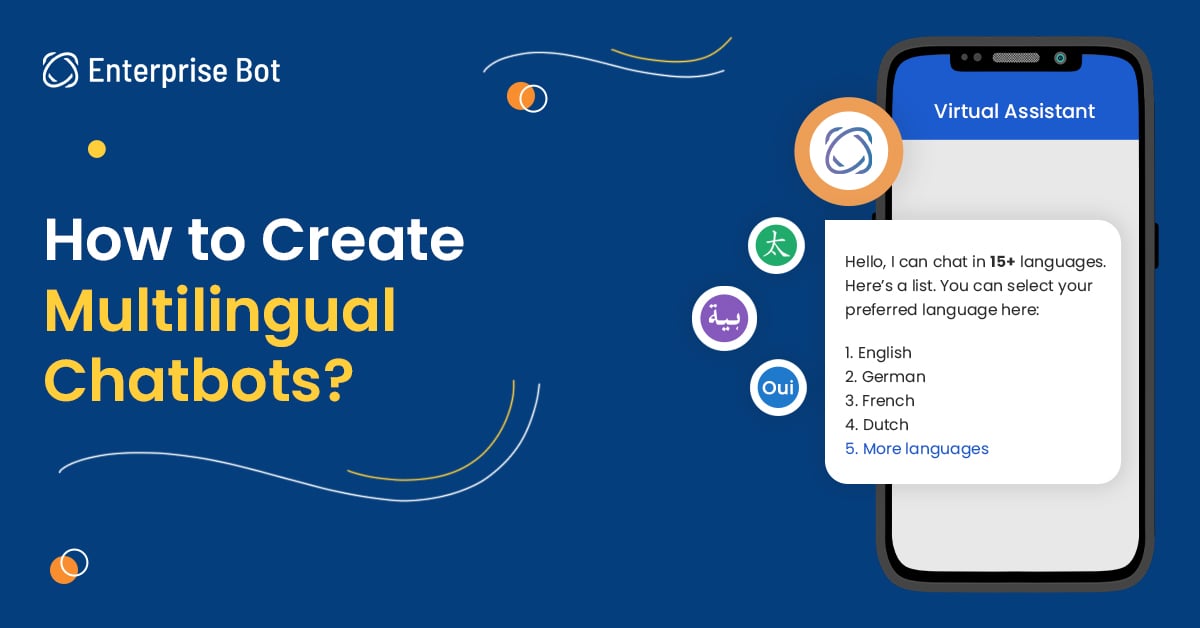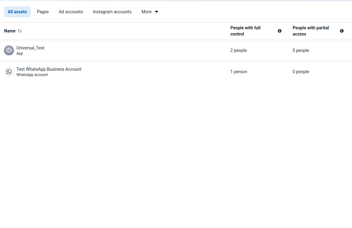How to Create Multilingual Chatbots?
Bertina: ik heb een gynaecoloog bij mij in de buurt nodig. Hoe boek ik een afspraak?
Chatbot: Sorry, I didn’t get that. I will try an FAQ search. Is there anything else I can help you with?
Bertina: Ik wil een afspraak met een gynaecoloog
Chatbot: Oops, I am unable to understand your language
Bertina: Show me the Gynecologists near me. I need to book an appointment.
Chatbot: I got 12 specialists nearby matching your search
Bertina wants to book an appointment with the chatbot. Though the bot has made honest efforts to assist Bertina in real-time with accurate responses, it fails to assist her initially as she interacts in her native language. Later, when she communicates in English, the chatbot finally understands and guides her. Ultimately, it all comes down to the brand has failed to deliver the right user experience one needs to improve CSAT.
Do you realize the picture would have been completely different if it were a multilingual chatbot?
Multilingual chatbots are one of the most seamless, cost-effective and efficient ways your brand can deliver the customer experience your customers desire.
With your client-base spreading across the world, you need to be flexible in your approach. Today, most of the clients hope to converse with organizations in their preferred dialects and tongues. It is even more essential when users reach out to your brand via chatbots on your website, whatsapp, messenger etc. Speaking with your customers in their favored language is craftsmanship that leading organizations have gained expertise on. They are now ready to leverage alternate approaches such as ML-powered custom APIs to decipher inbound and outbound messages through multilingual chatbots.
On account of the progressions in AI, NLP, and shared open-source endeavors, multilingual chatbots are becoming more intelligent and vernacular. They talk as smoothly as any human would do and are likewise exceptionally responsive and natural.
A multilingual chatbot doesn’t only have the capacity to comprehend one or two languages but an unlimited number of dialects. The more you train your bot feeding in different languages, the more effectively it will perform and it isn’t mechanical in any way. Enabled with the advanced algorithm of NLP, AI virtual assistants perform advanced sentiment analysis to understand the context of user queries and then respond. Along these lines, multilingual bots are certainly turning out to be a fundamental venture for organizations as they help take into account a linguistically diverse customer base.
What is a multilingual chatbot?
A multilingual chatbot provides assistants to clients in different languages. These days for organizations that are functioning globally, multilingual chatbots are an obligatory necessity.
The world is presently more associated with online media, and multilingual chatbots resolve the language obstacle for any sort of business.
Why do you need Multilingual Chatbots?
Consider a situation where you are promoting and selling your item around the world.
One of the German-speaking clients visits your site and starts enquiring about the item and latest offers in German, yet your chatbot can just reply in English and it’s idiom “Sorry I can’t comprehend your language. Could you kindly sort your inquiry in English?”
That is it, the client will leave your site and will investigate different choices and you have lost a possible customer.
It would be best to sort out some way to close the correspondence hole among you and your worldwide clients. But, first, you need to get what your clients need and how they’re requesting it with the goal that you can deal with them.
This capacity makes chatbots an essential instrument for organizations, considering how development is key for all organizations. It’s incredible to see that organizations presently have the chance to grow outside their present nearby market.
With Multilingual chatbots, you can offer 24X7 assistance and be ready to give a superior and customized experience to your users in their preferred languages.
Factors you need to check when creating a multilingual chatbot
Does it offer seamless language switching?
It would be best if you made it simple for clients to choose their favored language. Try not to make them battle while attempting to comprehend the default language before they track down the one they’re searching for.
Present the language alternatives forthright, Ideally, in the hello message.
This ties into the last point. You’d need to share a common introductory message across all communications and languages you assist with so that users can easily pick whichever language they are comfortable in.
Is there any critical value missing?
Go through the entirety of your strings and messages to guarantee that everything is spot on, including the settings and default values.
You’d end up with a bizarre UX in case they wind up seeing keys rather than texts from your bot.
Is the text mixing up with special characters?
With regards to certain dialects, you’ll end up with blunders on the off chance that you utilize special characters like *, “”,^.$,#. Including them to the language key may result in mistakes while localizing your multilingual chatbot.
Do the conversations offer a human touch?
Let’s go back to the day when customers used to visit your nearby stores for regular purchases. Hasn’t the shopkeeper greeted you in your local language? They even knew customers’ names, what they generally purchased etc. They had a relationship with their clients.
Just like this in digital interactions, a brand should focus on building strong relationships with customers by engaging them in the right way and delivering personalized experience.
For example, collecting customer feedback post purchase is a great strategy to realize you value their experience despite receiving the payment.
How to create your own multilingual chatbot?
The following steps can help you to start building your own multilingual chatbot.
Determine which languages you need
Before you start building your multilingual chatbot, you should first determine which languages you want to include and which ‘lingua franca’ you want to use that most people will understand. This lingua franca will be used for your welcome message, so make sure that you familiarize yourself with the region your chatbot will be active in. If you have picked a language that no one will understand, users will give up immediately and not even start a conversation with the bot.
Create your bot and define your topics
Once you have determined which languages you want to use, you can start creating your bot. For each language, you will need to define the topics you want your chatbot to cover. These will likely be the same topics for each language – which means some translation work too! – but you can always add particular topics per language if necessary. You will also have to include enough triggers per topic and language for the AI-component to work properly.
Setup your welcome message
Your welcome message will be the starting point where the user can select the language they want to communicate in. This welcome message will appear when the user initiates the chat – and in the lingua franca, you have chosen.
Make sure to write a short, easy-to-understand message and include a suggestion button per language option. An example of the welcome message could be as simple as “Please select your language” with the language options underneath. When the user opens the chat, he or she will immediately see the language options available to proceed with the interaction.
Other possibilities
If you want to use your chatbot on a website that already allows the user to choose their language, it’s a good idea to include the bot in that language straight away. That way the user does not have to go through the hassle of choosing their preferred language when they initiate the chat, and the bot can instantly respond in the language they had already selected. This will also leave the user with a sense of fulfillment because there is no discrepancy between the language of the website and the chatbot.
Conclusion
With digitalization, the world has become smaller, and it’s easy to reach customers in any part of the world. So the language shouldn’t be an obstacle to the success of your business.
Go ahead and create your multilingual chatbots easily with our drag and drop interface. Without any coding or technical knowledge, you can create your own multilingual chatbot within a few minutes and use it on your business websites.
Also, note that a multilingual chatbot can be integrated with messaging platforms like Facebook Messenger, whatsapp and the bot handles the visitor queries in any language.
About Enterprise Bot
We offer cutting-edge conversational AI solutions powered by hyper-automation to revamp customer service and sales interactions for enterprises. Our AI-powered assistants enhance digital engagement for businesses by delivering omnichannel, personalized experiences. Powered by advanced NLP and effective intent analysis, our technological solutions map the entire customer journey to send automated responses in seconds and create an exceptional customer experience (CX).




